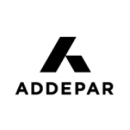It’s no secret that creating spaces of equity for everyone in the workplace is long overdue. But every company’s culture is built upon a different set of values, and changing existing mindsets — even for the obvious greater good — takes time, consistent motivation and, most importantly, understanding.
According to Built In’s State of DEI in Tech 2022 report, many companies have doubled their commitments to support equity and inclusion in tech since 2020. However, one in four of the companies surveyed said their teams were more than 70 percent white, and 30 percent said their companies still had no DEI programs in place. Results like these can make leadership teams feel as if they’ve taken one step forward, while employees believe they’ve taken two steps back.
Additionally, it might make some employees want to take action themselves.
While it can seem daunting for individual contributors to enact massive organizational change, DEI experts have a strategy: Start small.
“The real work — attracting diverse talent and creating a culture of inclusion and belonging — is done throughout the company by all employees, regardless of level,” said Mayumi Worgotter, director of internal communications and DEI at Datadog. “One of the most powerful ways to do this is through active allyship and lending privilege to others.”
For Sumit Satarkar, implementation project manager at Addepar, it comes down to “acting like an owner” of a process and seeing initiatives through to completion. “You can share an important educational resource with your colleagues, and you can recommend outside diversity partners to work with or share their events,” he said.
Built In NYC sat down with Worgotter, Satarkar and five other local leaders to hear how individual contributors can create real change in the DEI space and how leadership can truly empower teams to foster a more inclusive work environment.

Capital One is a tech-powered banking company dedicated to bringing humanity, ingenuity and simplicity to banking.
Beyond simply speaking up, what’s one concrete action an individual contributor can take to bring about meaningful change in their organization as it pertains to DEI?
Share your network with others. I founded Tech By Superwoman, a platform and a movement focused on conversations about diversity in tech. The idea came about in 2011 — years before I joined Capital One — as I was preparing to attend the South By Southwest conference in Austin, Texas. I wanted all of the intergenerational, multi-ethnic, multiracial, really cool women leaders who inspire me to know each other. It’s since grown into a two-day summit where women can bond over growth and development, mentorship and the power of connections.
I appreciate that Capital One is willing to invest in me outside of just what I do for work.”
How does the leadership at Capital One encourage or empower individual employees to be vocal and active in driving forward initiatives that improve DEI?
One of the things I think Capital One does very effectively is leading diversity, inclusion and belonging work from all parts of the business. You have technology leaders who are leading key business initiatives also saying, “This is important” and committing resources and time to calling attention to it.
After I joined Capital One in 2017, I was in the process of organizing another Tech By Superwoman summit. Capital One sponsored the event and gave me the time and respect to pursue the event. I appreciate that Capital One is willing to invest in me outside of just what I do for work. That gives associates a tremendous opportunity to grow and try new things.

Datadog is a monitoring and security platform for cloud-scale infrastructure and applications.
Beyond simply speaking up, what’s one concrete action an individual contributor can take to bring about meaningful change in their organization as it pertains to DEI?
Advancing diversity, equity and inclusion is not specific to the human resources function or to my role. The real work — attracting diverse talent and creating a culture of inclusion and belonging — is done throughout the company by all employees, regardless of level or scope of work. The true success of DEI at an organization occurs when it is woven into everything we do. One of the most powerful ways to do this is through active allyship and lending privilege to others. This can be as simple as sharing your pronouns with others: It’s a quick but meaningful way to acknowledge your privilege and use it to recognize those who do not have it.
The true success of DEI at an organization occurs when it is woven into everything we do.”
How does the leadership at Datadog encourage or empower individual employees to be vocal and active in driving forward initiatives that improve DEI?
Datadog values a curious, humble mindset and approach to problem solving. We also recognize that diverse experiences and perspectives are critical to helping us stay innovative and agile. This intersection of curiosity, humility and inclusion have enabled us to create a low-ego culture where individual employees can easily share feedback and ideas. We have structured forums, like recurring Ask Me Anything sessions with our CEO and bi-annual employee engagement surveys, but we’ve seen meaningful change come from more organic moments such as Slack conversations.
An example of this would be Datadog’s Community Guilds, which are employee-driven groups of individuals who join together based on common backgrounds or demographic factors, and the allies who support them. Developed by our employees for our employees, Community Guilds foster an inclusive environment, encourage collaboration and increase a sense of belonging across departments and regions.

Northwestern Mutual is a financial services company whose offerings include insurance, financial planning and wealth management.
Beyond simply speaking up, what’s one concrete action an individual contributor can take to bring about meaningful change in their organization as it pertains to DEI?
In my role, I work directly with our employee resource groups (ERGs) and members of our DEI councils. Joining these groups is one of the best ways to get involved as an individual contributor. It’s a great way to contribute to our culture and stay connected to the organization’s priorities and initiatives.
By joining one of our eight ERGs at Northwestern Mutual, you create change — regardless of your job level or seniority within the organization. And you determine how involved you want to be. You can be a member, sit on a committee, or step into a leadership role. It’s a great way to drive change, coach others and grow your skill sets.
By joining one of our ERGs at Northwestern Mutual, you create change — regardless of your job level or seniority within the organization.”
How does the leadership at Northwestern Mutual encourage or empower individual employees to be vocal and active in driving forward initiatives that improve DEI?
I’ve been at Northwestern Mutual for a little over six years, and I’m so proud of the journey that our organization is taking to drive positive change for DEI. Our work is championed by our CEO and senior leadership team, and funnels through the organization working to embed DEI enterprise-wide.
Our DEI journey didn’t just happen overnight — it’s a long-term strategic focus. We started with education to create and drive toward a culture of ownership and accountability. Whether you’re a leader of leaders, manager of a team or an employee, or an individual contributor, you have a role to play in supporting our people.
One way we’ve created accountability is through launching our people leader DEI goals. Each people leader has a specific set of DEI goals they can choose from to drive forward throughout the year. For employees who are not people leaders, we leverage ERGs to give people opportunities to get involved. We currently have almost 3,000 members involved in our eight ERGs — and that number continues to grow. Our groups are filled with employees who contribute, share their unique voice and drive change within the organization.

Addepar’s centralized platform allows investors and their partners to maintain control over their key assets in all currencies.
Beyond simply speaking up, what’s one concrete action an individual contributor can take to bring about meaningful change in their organization as it pertains to DEI?
Raising awareness is a key first step, but I encourage everyone to also take ownership. “Acting like an owner” is a core value at Addepar and seeing something through to completion can be meaningful. You can share an important educational resource with your colleagues. In your team, you can speak about the importance of diversity and include it in your hiring or promotion decisions. You can recommend outside diversity partners to work with or share their events. If you have a DEI idea, own it and execute it, even if it’s something small. It will encourage you and allow you to build on it in the future.
Addepar has partnered with Out In Tech (OIT) for a while. In 2022, I wanted to leverage that partnership to the best of our ability. So, I have been working with our talent acquisition partners to participate in OIT’s career events and use OIT’s job board to diversify our candidate pool even more. I am sharing OIT events with our LGBTQ+ employee group to give them opportunities to participate, volunteer and expand their network. I am really grateful to my co-leads and our executive leadership for giving me an opportunity to add value beyond my everyday role.
If you have a DEI idea, own it and execute it — even if it’s something small. It will allow you to build on it in the future.”
How does the leadership at Addepar encourage or empower individual employees to be vocal and active in driving forward initiatives that improve DEI?
Addepar leadership has included DEI in our corporate goals, provided us tools to implement them and established channels to track progress and also to provide feedback.
We have multiple employee affinity groups that employees are encouraged to participate in and lead. Leadership often attends events sponsored by the groups and the affinity groups also brief the leadership regularly on their progress and needs. There are anonymous surveys sent to employees to get feedback on how Addepar is doing on DEI metrics. Results and next steps from these surveys are discussed in corporate-wide meetings. To diversify candidate pools, affinity group members are encouraged and rewarded for participation in the recruitment process.

Justworks is an HR technology company that has built a single platform to manage HR, payroll, benefits and compliance.
Beyond simply speaking up, what’s one concrete action an individual contributor can take to bring about meaningful change in their organization as it pertains to DEI?
The best action an individual contributor can take is minimizing microaggressions to help eliminate the pressure to cover at work. Covering refers to the act of hiding something about ourselves, lessening an aspect about our identity or personal characteristics so as not to appear different from the “dominant culture” represented in the workplace. Research from Catalyst, a global nonprofit, found that covering at work is not only detrimental to the individuals covering, but also to the organization as a whole. Every individual in a workplace can take steps each day to ensure colleagues feel safe, supported and welcomed.
These experiences can also be improved by creating psychological safety in the workplace — an act in which every employee can participate. Every employee can do this by being an ally to a colleague when they speak up about an alienating experience. As an ally, ask active questions and be willing to fully engage in a conversation — not with the focus of solutioning, but with the intent to acknowledge, understand and support. Sometimes the most important thing you can do to create a more inclusive workplace is to make space and time for your colleagues.
Sometimes the most important thing you can do to create a more inclusive workplace is to make space and time for your colleagues.”
How does the leadership at Justworks encourage or empower individual employees to be vocal and active in driving forward initiatives that improve DEI?
One of the key ways in which we ensure our employees understand our commitment is by ensuring that diversity, equity, inclusion and belonging (DEIB) is a fixture in every part of the employee life cycle. This is practiced in several ways.
At new hire orientation, our ERG leads present to the new class and share more details about how to get involved as a community member and an ally. For new hires and all employees, we encourage them to introduce themselves in meetings by specifying their preferred pronouns and to include the information in their company profiles. This action helps to create an environment where employees are open to fully expressing themselves without fear.
Our third practice is specific for managers at Justworks. We offer them a number of DEIB tools as part of resources available to be effective leaders. A recent example is the development of guidance around how to best support employees observing Ramadan. The guidance included support from HR partners, specific examples and scenarios they could reference for support, and time during our weekly manager only meetings where they are given the opportunity to ask questions or solicit support.
Headway is a mental health platform that has built a software-enabled national network of therapists who accept health insurance.
Beyond simply speaking up, what’s one concrete action an individual contributor can take to bring about meaningful change in their organization as it pertains to DEI?
Because of their lived experiences, marginalized groups of people are better able to address certain perspectives. Explaining these perspectives to a broader, less informed company in an effort to combat microaggressions and raise overall awareness can be a daunting task for an individual contributor. Fear of making colleagues uncomfortable is very real. Nonetheless, it is crucial that an employee is able to bring their whole, genuine self to work. Cultivating an environment in which employees feel comfortable being themselves is key.
My suggestion? Always take the opportunity to inform, educate and change company processes that negatively impact marginalized employees! For example, my colleague noticed a trend of inappropriate term usage when describing an emotion — like crazy — or groups of people — “you guys” — across company communication channels. He then took it upon himself to educate the company on the concept of inclusive language and appropriate identifiers.
Now, we have a Slack bot that gives alternate suggestions to all-encompassing gender terms and both our Zoom names and email signatures include our pronouns, creating a more inclusive culture.
Always take the opportunity to inform, educate and change company processes that negatively impact marginalized employees.”
How does the leadership at Headway encourage or empower individual employees to be vocal and active in driving forward initiatives that improve DEI?
An open, consistent bridge between the executive team and employees is crucial for Headway’s success. Employees have voices that need to be heard, and receiving support or sponsorship for the introduction of DEI-related initiatives from leadership is special. Executive buy-in sends the message that DEI initiatives are both high priority and valuable to the company’s overall success.
As a company scales, it can be difficult for executive teams to stay knowledgeable on marginalized employee concerns and the DEI initiatives in the works. Currently at Headway, we have our interim head of people as an official member of both Headway’s DEI committee and also Headway’s executive team. She serves as a liaison between the committee and the executive team to prevent any potential disconnect. She provides guidance on how to present the DEI committee’s ideas and concerns in the most impactful way to drive initiatives forward.
Away is a modern lifestyle brand creating thoughtful products designed to transform travel.
Beyond simply speaking up, what’s one concrete action an individual contributor can take to bring about meaningful change in their organization as it pertains to DEI?
It’s important to acknowledge the challenges employees face when speaking up at their company. One of the largest challenges I used to face was feeling like I was the only one who wanted or needed certain support and resources. It wasn’t until I created an employee resource group for Black women at my last organization that I realized how many of us need the support of a community to help navigate the challenges we experience in the workplace.
I’m proud to share that Away recently revamped our ERG program to truly center the needs of our underrepresented employees. We have five incredible ERGs that can uncover issues specific to diverse communities, share relatable cultural perspectives and raise awareness across the company. These employee-led communities are critical to the success of people across all levels of our organization, and provide an opportunity for us to strengthen our collective voice together. I encourage anyone wanting to build meaningful change to find community in the workplace: join an ERG you identify with, attend cultural engagement opportunities, or go to team-building activities. Finding our voice can often feel difficult, but it’s so much easier when you know you’re not alone.
It wasn’t until I created an ERG for Black women that I realized how many of us need the support of a community.”
How does the leadership at Away encourage or empower individual employees to be vocal and active in driving forward initiatives that improve DEI?
For DEI initiatives to be successful, leadership support and involvement are essential. For example, Away’s senior leadership plays a large role in our employee resource groups. Each of our five ERGs has been matched with an executive sponsor who helps develop leadership talent within the ERG, ensures visibility and recognition of the group, and provides navigational insight to ensure organizational alignment and support. They work directly with the leaders of each group to promote their groups’ work across the company — affirming the importance of making DEI a priority, while also being an encouraging and supportive thought partner.
The last two years have been difficult for many of us in the workforce, to say the least. Some, like me, onboarded into the company during the pandemic, making it difficult to build and maintain new relationships. Others experienced new challenges in balancing work and home life, childcare resources and more. Knowing that our leadership not only supports this work, but is deeply involved, signals to everyone at Away that fostering our employees’ psychological safety and building an inclusive environment is incredibly important to our company.



















